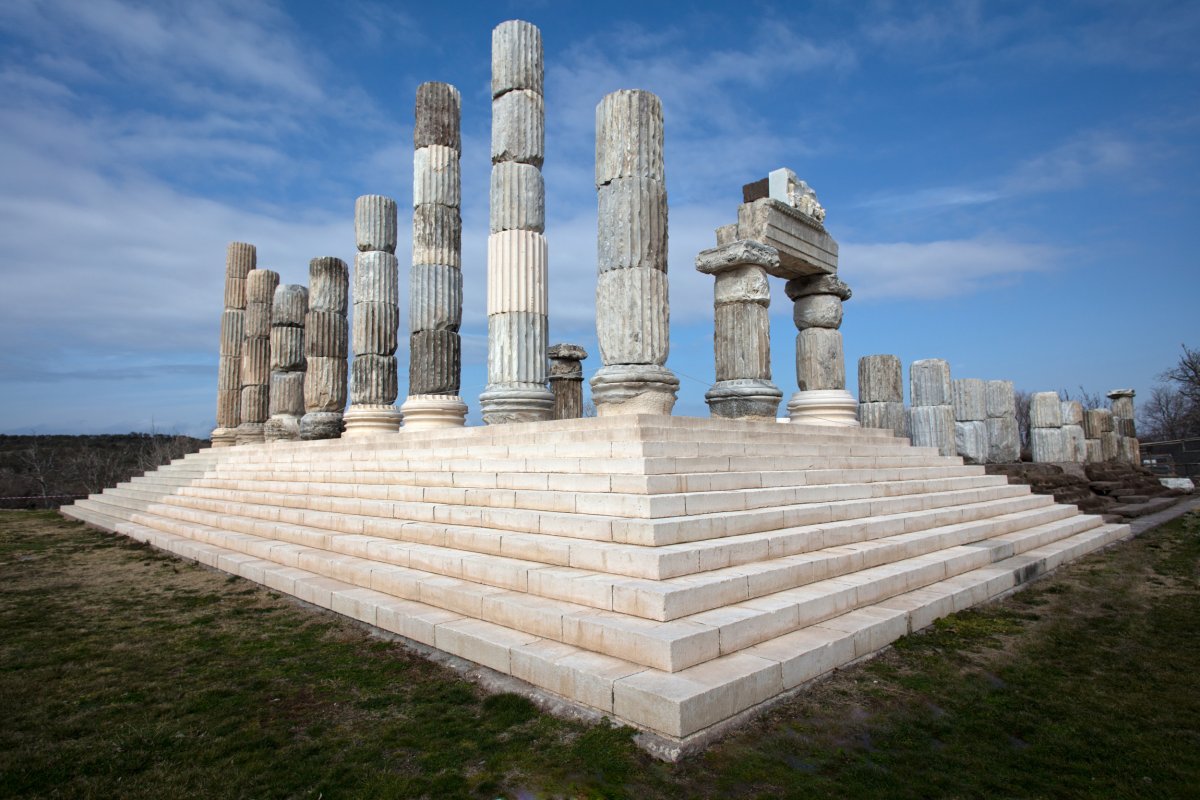Archaeologists have uncovered a 2,000-year-old monumental tomb dating back to the Roman Empire in Turkey.
Researchers uncovered the remains of the tomb near the ancient Greek sanctuary of Apollon Smintheion, which lies in the modern-day Turkish village of Gülpınar, Çanakkale Province—located just off the western coast of Anatolia—the Daily Sabah reported.
Within the burial chamber of the tomb, the team found the remains of several people, likely more than 10 individuals—including children and adults. The remains were found mixed together.
Researchers suggest that the tomb, which is located in the necropolis, or cemetery, adjacent to the sanctuary, may have been by affluent individuals during the Roman imperial period.

The Roman Empire was founded in 27 B.C. following the demise of the preceding ancient state known as the Roman Republic. At its greatest extent, the empire, which was centered on Rome in Italy, ruled over large swathes of Europe, North Africa and Western Asia.
The sanctuary of Apollon Smintheion was built by ancient Greek people who had settled in Anatolia. It is one of the most important sanctuaries in the historical region of Troas, or Troad, which is also home to the legendary city of Troy, best known from the Greek myth of the Trojan War.
The sanctuary features an iconic temple, thought to have been built around 150 B.C., that is decorated with reliefs depicting scenes from the Trojan War as described in the epic ancient Greek poem, the Iliad.
The sanctuary is associated with the ancient Greek city of Hamaxitus, which is also located in the vicinity of Gülpınar. The ancient settlement is thought to have been founded in the 8th or 7th centuries B.C.
While ancient Greek settlements flourished in Troas for large periods of the 1st millennium B.C., the historical region became part of the Roman Republic in 133 B.C.—along with several other territories—eventually falling under the control of the Empire.
Excavations conducted between June and October this year near the Apollon Smintheion sanctuary revealed the remnants of the monumental tomb. Based on artifacts found during the excavations, the archaeologists estimated that the tomb dates back approximately 2,000 years.
Investigations at the site will continue in the coming years, opening up the possibility that more tombs will be uncovered, according to the archaeologists.
"With the potential emergence of more tombs in this area...we will be able to obtain much more comprehensive information about burial traditions, types of tombs, changes in the boundaries of the sacred area and architectural phases," Hüseyin Yaman, a member of the excavation team, told the Daily Sabah.
Do you have a tip on a science story that Newsweek should be covering? Do you have a question about archaeology? Let us know via science@newsweek.com.
Uncommon Knowledge
Newsweek is committed to challenging conventional wisdom and finding connections in the search for common ground.
Newsweek is committed to challenging conventional wisdom and finding connections in the search for common ground.
About the writer
Aristos is a Newsweek science reporter with the London, U.K., bureau. He reports on science and health topics, including; animal, ... Read more
To read how Newsweek uses AI as a newsroom tool, Click here.






